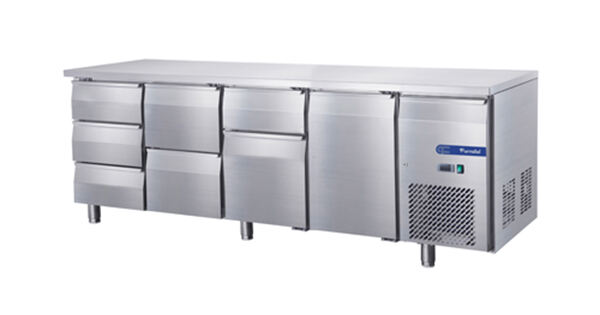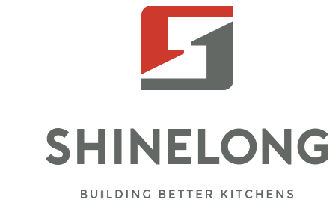News
Top 5 Space-Saving Refrigeration Equipment Every Small Restaurant Needs

Choosing the right refrigeration equipment can be tricky for anyone planning to run a small restaurant. However, as a crucial part of the back line, setting up a rational storage area is not only about choosing the right dimensions for freezers or chillers, but also about integrating the cooling systems into your workflow, saving both time and space. Making full use of every corner of your kitchen is definitely a smart strategy, whether you’re building a bistro, bar, or QSR.
In this guide, we will walk you through the golden rules for selecting units, as well as the top 5 commercial refrigeration equipment pieces that every space-limited restaurant needs.
The Golden Rules of Cold Storage in Tight Spaces
Before buying a single fridge, you need to think like an architect and a chef at the same time. Here are three golden rules to guide your equipment strategy, which is tested, proven, and used by real small restaurants around the world.
1. Use Your Height, Vertical Is the New Wide
When your floor space runs out, your walls are still available real estate. Upright refrigerators, vertical shelving, and wall-mounted chillers help you store more without crowding the prep line. Always think up, not out.
2. Dual-Function, One Surface, Two Purposes
In compact kitchens, any piece of restaurant and kitchen equipment should earn its place twice. Chef bases, refrigerated prep tables, and undercounter units double as both storage and workstations, reducing clutter while improving workflow. The top can be used as a food preparation table, for instance, chopping the cheese, cutting the vegetables and even wrapping the food. All the ingredients you can store below the space.
3. Separate Hot & Cold Zones, Keep the Balance
It’s tempting to squeeze everything together, but heat kills efficiency. Position refrigeration away from cooking lines or use chef base refrigerators designed to handle hot equipment on top. That’s how you keep the temperature stable and the compressor stress-free.Follow these three rules, and your kitchen starts working for you, not the other way around.
1. Undercounter Freezer
In a tight kitchen, distance really matters. That's where the undercounter refrigerator becomes your best friend! It keeps all your essentials, from fresh proteins, sauces, to dairy, all right under your prep table, so everything is within arm's reach. It’s compact, usually pretty quiet, and super easy to clean. Plus, most models rock that sleek stainless steel material for their worktops. As one of the most versatile pieces of commercial kitchen equipment, this unit perfectly integrates storage beneath your prep line. It’s truly the perfect functional and aesthetic solution for a small bistro or even a high-traffic bar area!
Why It’s a Smart Pick
- Perfect for line stations or bar areas.
- Front-breathing design, no wasted space for ventilation.
- Smooth access during rush hour, no bumping into others.
If your undercounter units start frosting up, check the defrost timer or sensors before calling a technician. You can read more in our Undercounter Chiller Defrost Guide, and it’s a practical fix for busy kitchens.
2. Chef Base Refrigerator
If the undercounter refrigerator is your cold assistant, the chef base is your reliable partner in the heat. Built with heavy-duty drawers, shelves and reinforced tops, it’s made to hold griddles, fryers, or charbroilers right above cold drawers storing ingredients ready for the next batch. It’s the true definition of “cool beneath the flame.” Typically, there are two options when it comes to a chef base, which are a freezer base and a refrigerator base. One for frozen goods and the other for keeping ingredients cool.
Why It’s a Good Choice
- Keeps proteins, seafood, or garnishes chilled directly under cooking equipment.
- Reduces trips across the kitchen; everything you need stays in reach.
- Stainless steel construction withstands heat, grease, and weight up to 400 kg.
A well-placed chef base can transform your workflow: no wasted steps, no overcooked steaks waiting on ingredients. Small kitchens that install one usually report up to 30% faster plating time.

3. Upright Reach-In Refrigerator
When the footprint is fixed, go vertical. The upright reach-in refrigerator uses height to multiply capacity without touching your limited floor area. Standing floor refrigeration equipment is always the optimal option for all types of restaurants, from fine dining, casual ones to hospitality, and it's a perfect solution for those demanding long-term storage of frozen goods, such as meat, seafood, protein and etc.
Key Strengths
- Multiple compartments, separate raw, cooked, and produce safely.
- Easy maintenance and energy-efficient compressors.
- Self-closing doors prevent heat intrusion during service rushes.
They’re ideal for kitchens that receive daily deliveries or store multiple menu prep items. Choose split-door models if your space can’t handle a full door swing; it saves movement space and keeps the cold where it belongs.
4. Refrigerated Prep Table
When service gets busy, the prep table becomes command central. It combines a stainless steel work surface with a built-in refrigerated base. It keeps ingredients like salad toppings, sandwich fillings, and pizza toppings cold and easily accessible during the entire food preparation. The worktop is the workstation for staff to prepare dishes, and the topping or filling is held in the refrigerated top section, so that it's a great design to improve the efficiency, esspecially for those small but busy operations like deli, cafe, or grocery store.
Why You’ll Love It
- Keeps everything within reach — no extra steps.
- Ideal temperature range for toppings: (2°C–8°C).
- Flip-top or glass-top lids maintain hygiene and cold air circulation.
This is the heart of most quick-service kitchens: efficient, visible, and built for constant use. The prep table keeps your mise en place fresh, organized, and ready for any order that comes flying in.
5. Bar Back Cooler
Your front-of-house also needs smart cooling. The bar back cooler fits neatly under counters, keeping drinks and garnishes chilled without interrupting the rhythm of service. It's a type of commercial refrigeration equipment built for installation behind the bar in pubs, restaurants, and bistros to keep beverages and beers chilled. With glass doors that allow for the attractive display and quick drink service.
Perks That Matter
- Glass doors for instant stock check.
- LED interior lighting, low heat, long lifespan.
- Compact design under 34 inches tall, fits under most counters.
It’s more than just a drink cooler; it’s a statement piece that complements open kitchens or compact bars.
Choosing the Right Combo for Your Space
Here’s how professionals approach it:
- Tiny kitchens (under 20 sqm): Combine an undercounter chiller and a chef base, the perfect hot-cold duo.
- Medium kitchens (20–40 sqm): Add a prep table to speed up service.
- Larger operations: Mix upright reach-ins and bar coolers for balanced storage.
When selecting refrigerant equipment, always factor in:
- Proper airflow (leave at least 2 inches behind the unit).
- Dedicated electrical load.
- Routine cleaning and coil maintenance.
According to the U.S. Department of Energy, efficient layout and monthly maintenance can cut your refrigeration energy costs by up to 15%.
FAQs — Real Questions from Small Kitchen Owners
- Q1: Is there a difference between a chiller and a refrigerator for restaurant kitchens?
- Yes. A chiller is used for short-term, near-freezing storage, while refrigerators handle broader cooling ranges.
- Q2: Can I put cooking equipment on any fridge?
- No, only chef base refrigerators are built to support heavy, hot appliances safely.
- Q3: What’s the best energy-efficient setup for a small kitchen?
- Use undercounter or chef bases for your hot line, and one upright fridge for storage. Fewer compressors, lower bills.
- Q4: How often should I defrost manually?
- Whenever ice buildup exceeds a pencil’s thickness — usually every 3–4 weeks if your kitchen is humid.
- Q5: What’s one mistake most small kitchens make?
- Placing refrigeration too close to cooking equipment without proper insulation, it forces compressors to overwork and shortens their lifespan.
 After-Sales:
After-Sales:
 EN
EN
 AR
AR
 HR
HR
 NL
NL
 FI
FI
 FR
FR
 DE
DE
 EL
EL
 HI
HI
 IT
IT
 PT
PT
 RO
RO
 RU
RU
 ES
ES
 TL
TL
 ID
ID
 SL
SL
 VI
VI
 ET
ET
 MT
MT
 TH
TH
 FA
FA
 AF
AF
 MS
MS
 IS
IS
 MK
MK
 HY
HY
 AZ
AZ
 KA
KA
 UR
UR
 BN
BN
 BS
BS
 KM
KM
 LO
LO
 LA
LA
 MN
MN
 NE
NE
 MY
MY
 UZ
UZ
 KU
KU









